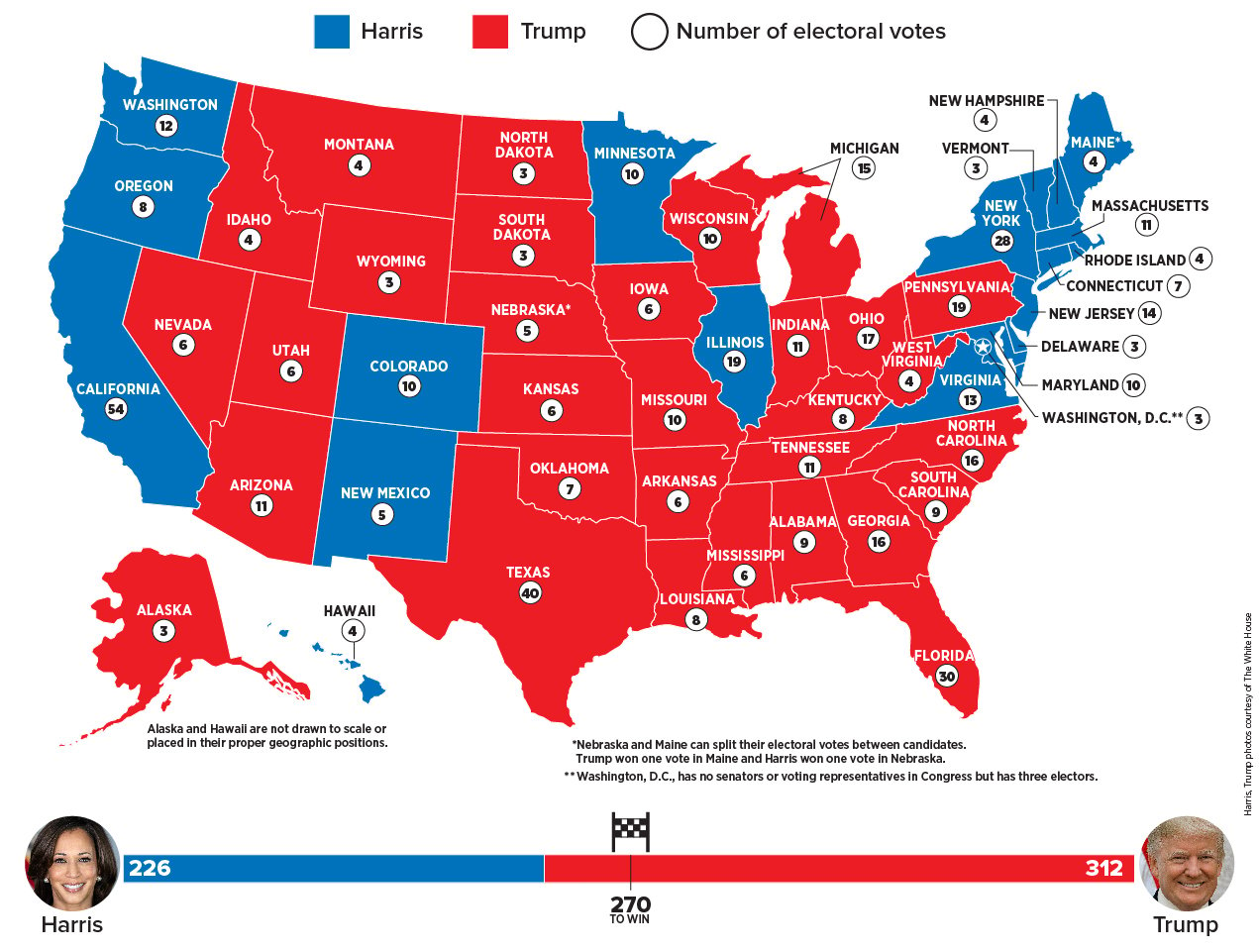Former President Donald Trump will be headed back to the White House. He has won this year’s presidential election, according to multiple news organizations. Trump, a Republican, defeated Vice President Kamala Harris, the Democratic candidate.
This will be Trump’s second term in office. He was president from 2017 to 2021, but he lost to Joe Biden in the last presidential election. Trump is the first president to win two nonconsecutive terms in the White House since Grover Cleveland won reelection in 1892.
“I think we just witnessed the greatest political comeback in the history of the United States of America,” J.D. Vance said in a speech early Wednesday morning. The U.S. senator from Ohio will serve as Trump’s vice president.


